National nature reserve for black-necked cranes in China's Tibet
Xinhua
1615819892000

Photo taken on March 14, 2021 shows black-necked cranes at the national nature reserve for black-necked cranes in Linzhou County of Lhasa, capital of southwest China's Tibet Autonomous Region. About 1,700 black-necked cranes arrive at the national nature reserve for black-necked cranes to spend the winter time every year. (Xinhua/Zhang Rufeng)
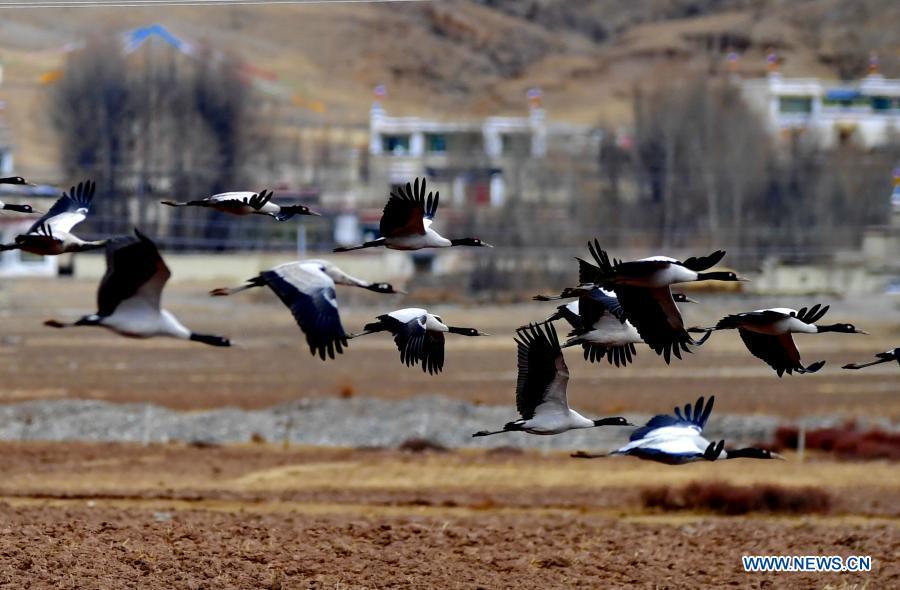
Photo taken on March 14, 2021 shows black-necked cranes flying at the national nature reserve for black-necked cranes in Linzhou County of Lhasa, capital of southwest China's Tibet Autonomous Region. About 1,700 black-necked cranes arrive at the national nature reserve for black-necked cranes to spend the winter time every year. (Xinhua/Zhang Rufeng)
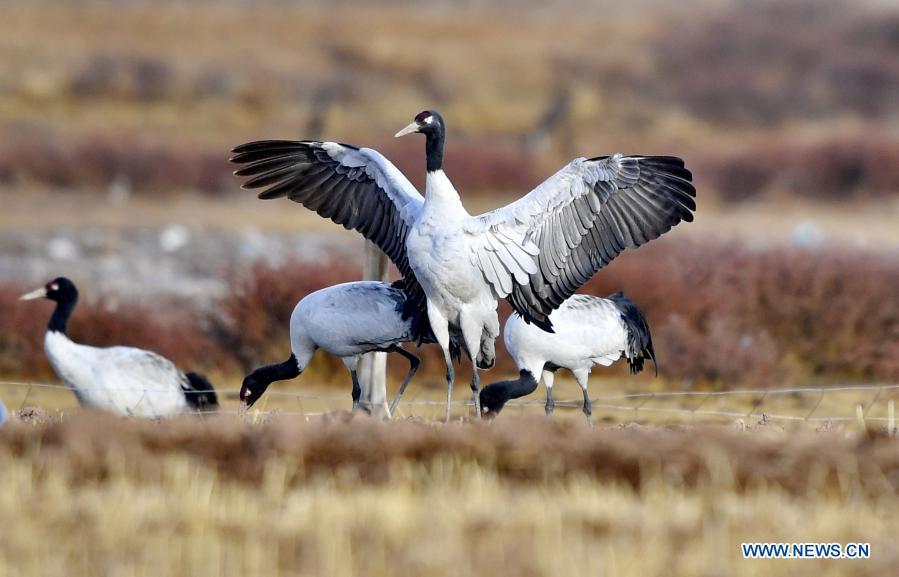
Photo taken on March 14, 2021 shows black-necked cranes at the national nature reserve for black-necked cranes in Linzhou County of Lhasa, capital of southwest China's Tibet Autonomous Region. About 1,700 black-necked cranes arrive at the national nature reserve for black-necked cranes to spend the winter time every year. (Xinhua/Zhang Rufeng)

Photo taken on March 14, 2021 shows a black-necked crane dancing in a farmland in Linzhou County of Lhasa, capital of southwest China's Tibet Autonomous Region. About 1,700 black-necked cranes arrive at the national nature reserve for black-necked cranes to spend the winter time every year. (Xinhua/Zhang Rufeng)
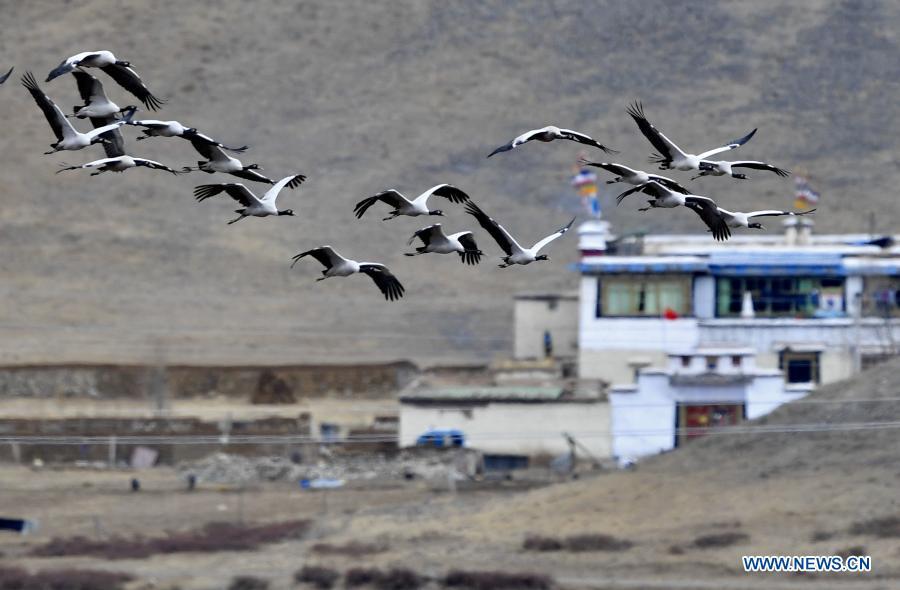
Photo taken on March 14, 2021 shows black-necked cranes flying in front of civil residence in Linzhou County of Lhasa, capital of southwest China's Tibet Autonomous Region. About 1,700 black-necked cranes arrive at the national nature reserve for black-necked cranes to spend the winter time every year. (Xinhua/Zhang Rufeng)

Photo taken on March 14, 2021 shows black-necked cranes at the national nature reserve for black-necked cranes in Linzhou County of Lhasa, capital of southwest China's Tibet Autonomous Region. About 1,700 black-necked cranes arrive at the national nature reserve for black-necked cranes to spend the winter time every year. (Xinhua/Zhang Rufeng)
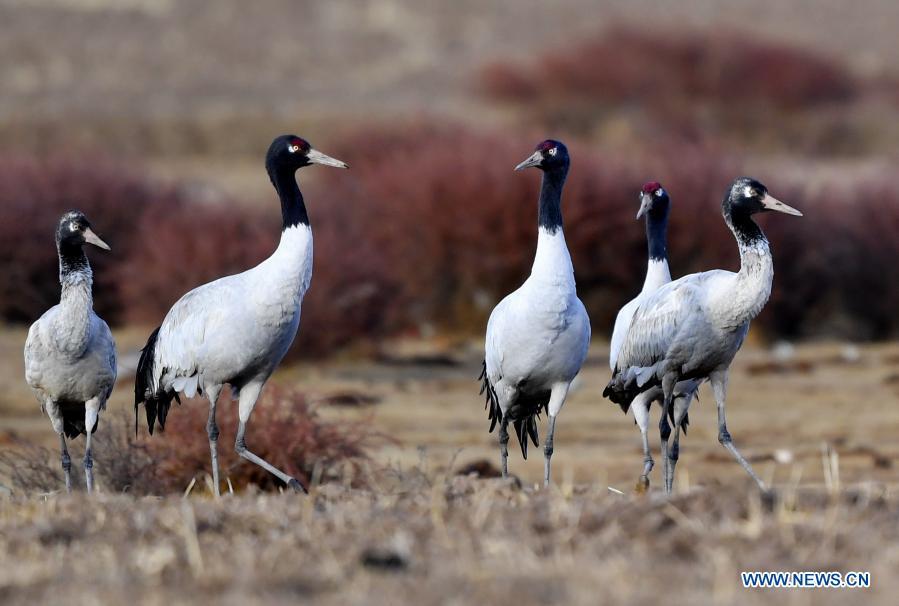
Photo taken on March 14, 2021 shows black-necked cranes resting at the national nature reserve for black-necked cranes in Linzhou County of Lhasa, capital of southwest China's Tibet Autonomous Region. About 1,700 black-necked cranes arrive at the national nature reserve for black-necked cranes to spend the winter time every year. (Xinhua/Zhang Rufeng)
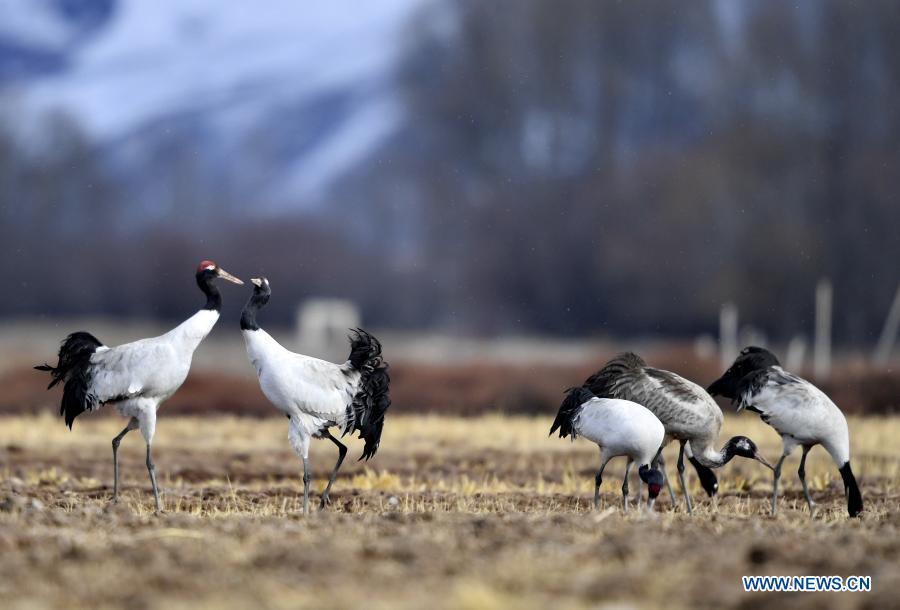
Photo taken on March 14, 2021 shows black-necked cranes foraging at the national nature reserve for black-necked cranes in Linzhou County of Lhasa, capital of southwest China's Tibet Autonomous Region. About 1,700 black-necked cranes arrive at the national nature reserve for black-necked cranes to spend the winter time every year. (Xinhua/Zhang Rufeng)

Photo taken on March 14, 2021 shows black-necked cranes flying at the national nature reserve for black-necked cranes in Linzhou County of Lhasa, capital of southwest China's Tibet Autonomous Region. About 1,700 black-necked cranes arrive at the national nature reserve for black-necked cranes to spend the winter time every year. (Xinhua/Zhang Rufeng)
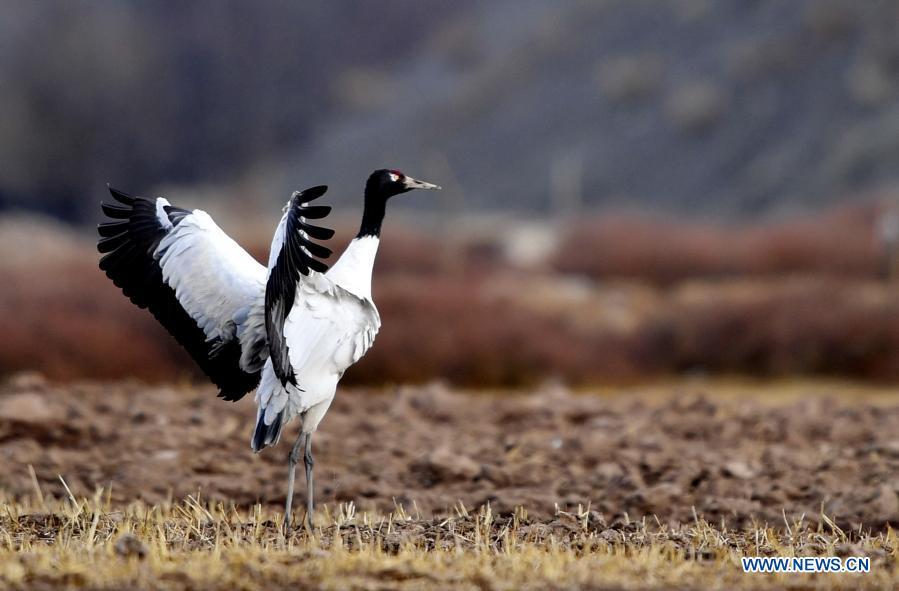
Photo taken on March 14, 2021 shows a black-necked crane stretching its wings at the national nature reserve for black-necked cranes in Linzhou County of Lhasa, capital of southwest China's Tibet Autonomous Region. About 1,700 black-necked cranes arrive at the national nature reserve for black-necked cranes to spend the winter time every year. (Xinhua/Zhang Rufeng)


